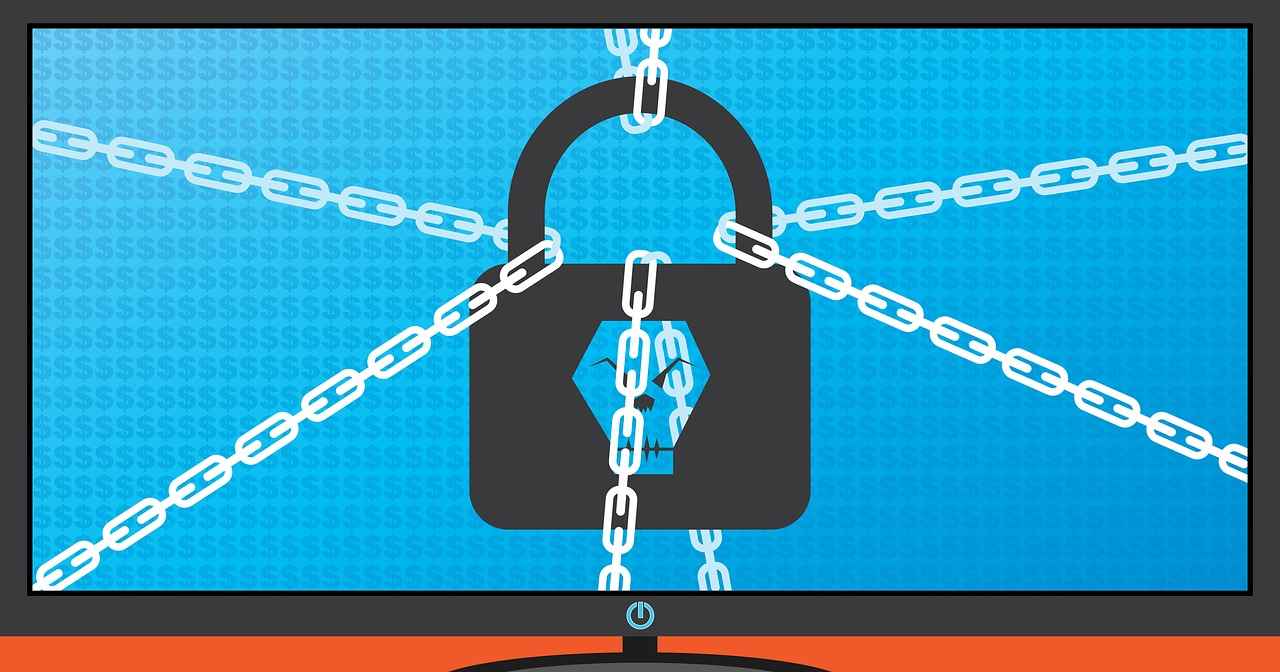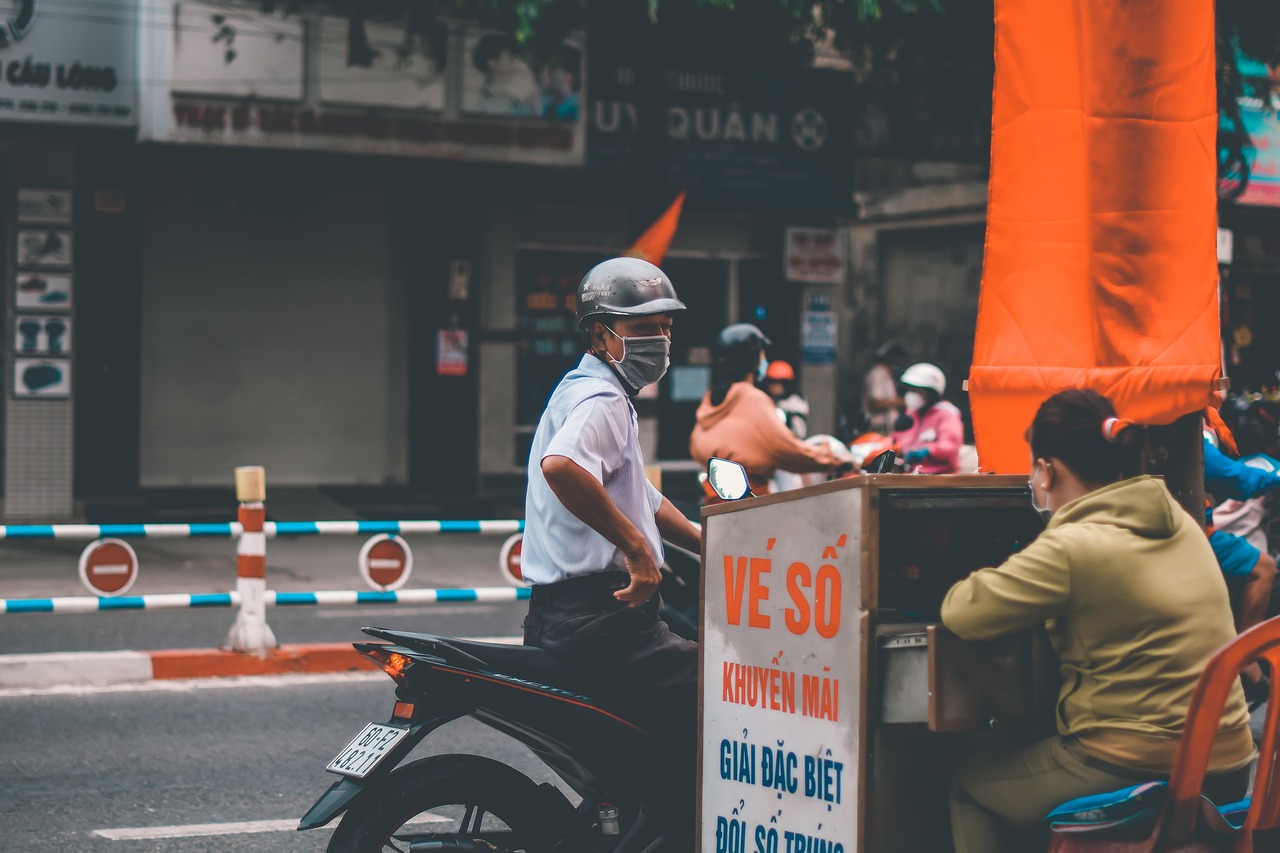This article provides essential tips and guidelines to help individuals navigate the challenges of the West Bengal lockdown while ensuring their safety and well-being.
As the West Bengal lockdown continues, it is crucial to understand the importance of adhering to safety protocols. The primary objective of the lockdown is to control the spread of infectious diseases, thereby protecting public health. By following the guidelines set forth by health authorities, individuals can contribute to the collective effort in combating the pandemic.
Essential Safety Measures to Follow
- Wearing Masks: It is vital to wear masks properly in public spaces to minimize the risk of virus transmission. Ensure that the mask covers both the nose and mouth.
- Social Distancing: Maintain at least six feet of distance from others, especially in crowded areas. This practice helps reduce contact and potential exposure.
- Hand Hygiene: Regularly wash your hands with soap and water for at least 20 seconds or use hand sanitizer with at least 60% alcohol.
Grocery Shopping Safely
Grocery shopping during a lockdown can pose risks, but with proper precautions, it can be done safely. Here are some tips:
- Plan Ahead: Create a shopping list and choose times to shop when stores are less crowded.
- Sanitize Your Groceries: After returning home, wash your hands and sanitize your groceries to eliminate any potential contaminants.
Staying Connected with Loved Ones
Social isolation can be challenging, but technology can help bridge the gap. Utilize video calls, social media, and online games to stay connected with family and friends.
Prioritizing Mental Health
During these uncertain times, mental health is paramount. Engage in mindfulness practices such as meditation or yoga to alleviate stress and anxiety. If needed, don’t hesitate to reach out to mental health professionals for support.
Conclusion: Staying Safe and Informed
In conclusion, navigating the West Bengal lockdown requires vigilance and adaptability. By following the outlined guidelines and prioritizing safety, individuals can protect themselves and their communities effectively.

Understanding the Importance of Lockdown
Lockdowns play a critical role in managing the spread of infectious diseases, particularly during outbreaks of highly contagious pathogens. The rationale behind the West Bengal lockdown was to mitigate the transmission rates of the virus, ensuring that the healthcare system is not overwhelmed. By implementing such measures, authorities aim to protect the health of the public and reduce the burden on medical facilities.
During a lockdown, individuals are encouraged to stay at home, which limits their exposure to the virus and helps break the chain of transmission. The primary objective is to prevent large gatherings and close contact among individuals, which are known to facilitate the spread of infections. In West Bengal, the decision to impose a lockdown was influenced by rising case numbers and the need to safeguard vulnerable populations, including the elderly and those with pre-existing health conditions.
The impact of the lockdown extends beyond just controlling the spread of the virus. It fosters a sense of community responsibility, encouraging individuals to take collective action for the greater good. This shared sense of purpose can lead to increased compliance with health guidelines, such as wearing masks and practicing social distancing.
Moreover, the lockdown provides an opportunity for public health authorities to conduct extensive testing and contact tracing, identifying and isolating cases more effectively. This proactive approach is essential in curbing outbreaks and ensuring that healthcare resources are allocated efficiently.
In summary, the West Bengal lockdown is a necessary measure to control the spread of infectious diseases. By prioritizing public health and safety, it aims to protect the community and pave the way for a safer environment as the situation evolves.

Essential Safety Measures to Follow
During a lockdown, it is crucial to adhere to specific safety measures to protect yourself and those around you. These practices are designed to minimize the risk of infection and ensure public health. Below are the key safety measures that everyone should follow:
- Wearing Masks: Masks serve as a barrier to prevent respiratory droplets from spreading. It is essential to wear a mask that fits snugly over your nose and mouth, ensuring there are no gaps. Consider using masks that meet the recommended standards, such as surgical masks or N95 respirators, especially in crowded places.
- Maintaining Social Distance: Keeping a distance of at least 6 feet from others is vital. This practice helps to reduce the chance of virus transmission, especially in public areas. When possible, avoid crowded places and opt for outdoor activities where social distancing can be maintained.
- Regular Hand Hygiene: Frequent handwashing with soap and water for at least 20 seconds is one of the most effective ways to eliminate germs. If soap is not available, use a hand sanitizer that contains at least 60% alcohol. Pay special attention to washing hands after being in public spaces or touching surfaces that are frequently used.
- Avoiding Touching Your Face: The virus can enter your body through your eyes, nose, and mouth. To reduce the risk of infection, avoid touching your face, and ensure that your hands are clean before doing so.
- Staying Informed: Keep up to date with the latest guidelines and recommendations from health authorities. This information can help you make informed decisions about your safety and the safety of others.
By following these essential safety measures, you can significantly reduce your risk of infection and contribute to the collective effort of controlling the spread of the virus. Remember, safety starts with individual responsibility.
Wearing Masks Effectively
is a crucial practice in reducing the transmission of viruses, particularly in public spaces. This section delves into the various types of masks, their proper usage, and the significance of consistent mask-wearing to safeguard both individual and community health.
In the fight against infectious diseases, understanding the different types of masks is essential. Masks can generally be categorized into three main types:
- Cloth Masks: These are reusable and can be made from various fabrics. While they provide a basic level of protection, their effectiveness largely depends on the number of layers and the type of fabric used.
- Surgical Masks: Typically used by healthcare professionals, these masks are designed to block large particles and droplets. They offer better protection than cloth masks and are disposable.
- N95 Respirators: These masks provide the highest level of filtration and are designed to fit tightly to the face. They are essential in high-risk environments and are recommended for healthcare workers.
To maximize the effectiveness of any mask, proper usage is paramount. Here are some dos and don’ts for wearing masks:
- Do: Ensure the mask covers both your nose and mouth completely.
- Do: Wash your hands before putting on and after removing the mask.
- Don’t: Touch the front of the mask while wearing it, as it may be contaminated.
- Don’t: Use a mask with a valve, as it allows respiratory droplets to escape.
The importance of wearing masks in public cannot be overstated. Masks act as a barrier, protecting not only the wearer but also those around them, especially in crowded or enclosed spaces. By adhering to mask mandates and guidelines, we contribute to the collective effort to curb the spread of viruses.
In conclusion, wearing masks effectively is an essential part of public health strategy. By understanding the types of masks available and following proper usage guidelines, individuals can significantly contribute to the safety and well-being of their communities.
Choosing the Right Mask
is essential for ensuring adequate protection during the ongoing pandemic. With various mask options available, it is crucial to understand the differences in their effectiveness to make informed decisions. This section will delve into the characteristics of cloth masks, surgical masks, and N95 respirators, highlighting their pros and cons.
| Type of Mask | Protection Level | Usage | Comfort | Cost |
|---|---|---|---|---|
| Cloth Masks | Low to Moderate | General public use, non-medical settings | Variable, often comfortable | Low |
| Surgical Masks | Moderate | Healthcare settings, general use | Moderate, disposable | Moderate |
| N95 Respirators | High | Healthcare professionals, high-risk environments | Less comfortable, tight fit | High |
Cloth masks are widely used due to their accessibility and comfort. They can be made from various materials and can be washed and reused, making them an economical option. However, their filtration capability can vary significantly, and they may not provide sufficient protection against airborne viruses.
Surgical masks offer better filtration than cloth masks and are designed to block large respiratory droplets. They are typically used in healthcare settings and provide a moderate level of protection. However, they are not intended for reuse and can be less comfortable for extended wear.
N95 respirators are the gold standard for mask protection, filtering out at least 95% of airborne particles. They are crucial for healthcare workers and individuals in high-risk environments. While they provide superior protection, they can be uncomfortable for prolonged use and are generally more expensive.
In conclusion, the choice of mask should be guided by the context of use, the level of exposure risk, and personal comfort. Understanding the differences between these options can empower individuals to make choices that prioritize their health and safety.
Proper Mask Usage
Understanding how to wear a mask properly is essential for ensuring both personal safety and the safety of others. Masks serve as a barrier to help prevent the spread of respiratory droplets that may contain viruses. Below are the dos and don’ts of mask-wearing to maximize efficacy:
| Dos | Don’ts |
|---|---|
| Do wash your hands before putting on your mask to avoid contamination. | Don’t touch the front of the mask while wearing it, as this area may be contaminated. |
| Do ensure a snug fit over your nose and mouth, with no gaps on the sides. | Don’t wear a mask that is too loose or has visible holes that can allow air to escape. |
| Do replace disposable masks after a single use and wash cloth masks regularly. | Don’t reuse disposable masks or wear a mask that is wet or damaged. |
| Do remove your mask by the ear loops or ties, avoiding contact with the front. | Don’t leave your mask hanging around your neck or chin when not in use. |
It is also crucial to remember that masks are most effective when combined with other preventive measures. Maintain a distance of at least six feet from others, practice good hand hygiene, and avoid crowded places whenever possible. Following these guidelines will help ensure that you are doing your part to protect yourself and those around you.
In conclusion, wearing a mask correctly is a simple yet powerful tool in the fight against infectious diseases. By adhering to these dos and don’ts, you contribute to a safer environment for everyone.
Maintaining Social Distancing
is essential during times of health crises, such as the ongoing pandemic. This strategy aims to reduce the spread of infectious diseases by minimizing close contact between individuals. Below are practical tips to help you effectively maintain distance both in public spaces and at home.
- Awareness of Personal Space: Understand the importance of keeping at least 6 feet (2 meters) away from others. This distance is crucial in preventing the transmission of viruses.
- Use Visual Cues: In public areas, look for markers or signs that indicate where to stand. These visual aids can help maintain proper spacing in queues or waiting areas.
- Avoid Crowded Places: Whenever possible, opt for less crowded times to visit stores, parks, or other public venues. Early mornings or weekdays are often less busy.
- Limit Close Gatherings: At home, consider limiting gatherings to only those who live in your household. If meeting others is necessary, do so outdoors where ventilation is better.
- Utilize Technology: For work or social interactions, leverage video conferencing tools to connect with colleagues and friends without needing to meet in person.
In Public: When you are out, always be mindful of your surroundings. If you notice a crowd, it is best to avoid that area or wait until it is less populated. Additionally, wearing a mask can provide an extra layer of protection, making it safer to be around others while still maintaining distance.
At Home: Create designated areas in your home for different activities to help maintain distance among family members. For instance, set up separate workspaces for remote work or study sessions to minimize close contact.
By implementing these strategies, you can effectively practice social distancing, ensuring not only your safety but also the well-being of those around you. Remember, every effort counts in the fight against the spread of infectious diseases.

Grocery Shopping Safely
Grocery shopping during a lockdown can be a daunting task, but with the right precautions, it can be done safely. As communities strive to manage the spread of the virus, it is essential to adopt practices that protect both yourself and others while fulfilling your grocery needs.
Here are some guidelines to help you shop safely:
- Plan Your Trip: Before heading out, create a detailed shopping list to minimize your time in the store. Consider shopping during off-peak hours to avoid crowds.
- Wear a Mask: Always wear a mask that covers both your nose and mouth. This is crucial in reducing the risk of airborne transmission.
- Maintain Social Distance: Keep at least six feet away from other shoppers. Markers on the floor can help remind you to maintain distance.
- Use Hand Sanitizer: Carry hand sanitizer with you and use it before and after touching items in the store.
- Avoid Touching Your Face: Refrain from touching your face while shopping, as this can lead to potential virus transmission.
Once you return home, it’s important to follow these sanitization steps:
- Wash Your Hands: Immediately wash your hands with soap and water for at least 20 seconds.
- Sanitize Your Groceries: Wipe down packaging with disinfectant wipes or spray. For fresh produce, rinse thoroughly under running water.
- Dispose of Packaging: Discard any unnecessary packaging to minimize the risk of contamination.
By following these guidelines, you can ensure a safer grocery shopping experience during the lockdown. Remember, your safety and the safety of others depend on the precautions you take. Stay informed, stay safe, and help protect your community.
Preparing for Your Shopping Trip
Preparation is key for safe grocery shopping, especially during challenging times like a lockdown. By taking the time to plan your shopping trip, you can minimize risks and ensure a smoother experience. This section will guide you through the essential steps of creating a shopping list and strategically planning your visit to avoid crowded times.
Firstly, creating a shopping list is crucial. This not only helps you remember what you need but also reduces the time spent in-store, limiting your exposure to potentially crowded areas. To create an effective list:
- Review your pantry and refrigerator to identify essentials.
- Organize your list by categories such as produce, dairy, and grains to streamline your shopping.
- Consider meal planning for the week to minimize the frequency of your shopping trips.
In addition to having a list, planning your visit is equally important. Here are some tips to help you avoid busy shopping times:
- Visit the store during off-peak hours, typically early in the morning or late in the evening.
- Check the store’s website or call ahead to find out when they are less crowded.
- Consider using curbside pickup or delivery services if available, as these options can further reduce your exposure.
Moreover, as you prepare for your trip, remember to bring necessary supplies such as a mask, hand sanitizer, and disinfectant wipes. This will ensure that you are ready to protect yourself and others while shopping.
In conclusion, proper preparation can significantly enhance your grocery shopping experience during a lockdown. By creating a detailed shopping list and planning your visit strategically, you can shop safely and efficiently, ultimately contributing to your well-being and that of your community.
Sanitizing Your Groceries
In today’s world, proper sanitation of groceries is more important than ever. As we navigate the challenges posed by the ongoing pandemic, ensuring that our food items are clean and safe for consumption is essential. This section outlines effective methods for cleaning and disinfecting your groceries after shopping, helping to minimize the risk of virus transmission.
Firstly, it is crucial to wash your hands thoroughly with soap and water for at least 20 seconds before and after handling groceries. This simple yet effective step reduces the likelihood of transferring any contaminants from your hands to your food.
Next, consider the following steps for sanitizing different types of groceries:
- Fruits and Vegetables: Rinse fresh produce under running water. For items with thicker skins, such as potatoes or cucumbers, use a brush to scrub the surface. Avoid using soap or bleach, as these can leave harmful residues.
- Packaged Items: Wipe down the exterior of boxes, cans, and plastic containers with a disinfecting wipe or a cloth soaked in a diluted bleach solution. Ensure that the solution is safe for food contact.
- Meat and Seafood: After unwrapping, place these items in a separate container and wash your hands immediately. Dispose of the packaging and sanitize the surface where the meat was placed.
It’s also advisable to let non-perishable items sit for a few hours before bringing them into the kitchen, as the virus can survive on surfaces for varying lengths of time. If possible, designate a specific area in your home for incoming groceries to avoid cross-contamination.
In conclusion, maintaining proper sanitation of groceries is a vital practice that contributes to overall health and safety. By following these steps, you can significantly reduce the risk of contamination and ensure that your food is safe for you and your family.

Staying Connected with Loved Ones
During challenging times such as a lockdown, social isolation can be particularly difficult. However, there are numerous ways to maintain and even strengthen your connections with friends and family using modern technology and creative approaches. This section delves into effective strategies for staying in touch and fostering relationships despite physical distance.
Utilizing Technology for Communication
Technology has become a lifeline for many during lockdowns. Here are some popular platforms and tools that can help you stay connected:
- Video Conferencing Apps: Tools like Zoom, Skype, and Google Meet allow for face-to-face interaction, making conversations feel more personal.
- Messaging Apps: WhatsApp, Telegram, and Facebook Messenger provide instant messaging options to share updates and photos.
- Social Media: Platforms like Facebook, Instagram, and Twitter enable sharing life moments and engaging with loved ones through posts and comments.
Engaging in Virtual Activities
Participating in shared activities can enhance your connections. Consider the following ideas:
- Online Game Nights: Play multiplayer games on platforms like Steam or mobile apps to enjoy friendly competition.
- Virtual Movie Nights: Use apps like Netflix Party or Kast to watch movies together while chatting in real-time.
- Group Workouts: Join online fitness classes or create a workout group to motivate each other and stay active.
Creative Outreach Ideas
In addition to technology, consider these creative methods to reach out:
- Send Handwritten Letters: A personal touch can mean a lot; surprise your loved ones with a heartfelt letter.
- Care Packages: Assemble and send packages filled with their favorite snacks, books, or small gifts to show you care.
- Host Virtual Celebrations: Celebrate birthdays or milestones with virtual parties where everyone can join in.
By leveraging technology and creativity, you can maintain strong connections with your loved ones during the lockdown. It’s essential to prioritize these relationships, as they play a crucial role in our emotional well-being during challenging times.
Utilizing Technology for Communication
In today’s fast-paced world, technology plays a pivotal role in helping us stay connected, especially during challenging times like a lockdown. With the rise of various digital platforms, maintaining relationships with friends and family has become more accessible and engaging. This section explores some of the most popular apps and tools designed for virtual gatherings and conversations.
- Video Conferencing Apps
- Zoom: A widely-used platform for virtual meetings, Zoom allows users to host large gatherings, making it ideal for family reunions, work meetings, and online classes.
- Google Meet: This tool integrates seamlessly with Google Workspace, offering a user-friendly interface for video calls and screen sharing.
- Microsoft Teams: Primarily used for business, Teams also supports personal meetings, allowing users to connect with loved ones while collaborating on shared projects.
- Messaging Applications
- WhatsApp: A popular messaging app that supports text, voice, and video calls, making it easy to stay in touch with loved ones.
- Telegram: Known for its privacy features, Telegram allows users to create large group chats and share multimedia content securely.
- Facebook Messenger: This app enables users to chat, share photos, and make video calls, all within the Facebook ecosystem.
- Social Media Platforms
- Facebook: Beyond messaging, Facebook offers features like group chats and events, allowing users to organize virtual gatherings with ease.
- Instagram: With its Stories and Live features, Instagram provides a fun way to share moments and connect with friends through visuals.
- Discord: Originally designed for gamers, Discord has evolved into a versatile platform for communities, offering voice channels and text chat options.
By leveraging these tools, individuals can foster meaningful connections and combat feelings of isolation. Virtual gatherings, whether through video calls or group chats, can help maintain relationships and create a sense of community, even from a distance.
In conclusion, utilizing technology for communication not only enhances our ability to stay connected but also enriches our social experiences during difficult times. Embracing these platforms can lead to more engaging interactions, ensuring that we remain close to our loved ones, no matter the circumstances.
Engaging in Virtual Activities
In today’s digital age, connecting with loved ones through virtual activities has become more important than ever. With the challenges posed by social distancing and lockdowns, finding ways to maintain relationships is crucial. Here are some creative ideas to keep your connections strong while having fun together online.
- Online Games: Engage in multiplayer games that allow you to play with friends and family. Popular options include Among Us, where players work together to complete tasks while trying to identify impostors, and Jackbox Party Packs, which offer a variety of mini-games that can accommodate large groups.
- Virtual Movie Nights: Use platforms like Netflix Party or Teleparty to watch films simultaneously with friends. You can chat in real-time, share reactions, and even host themed movie marathons to make it more exciting.
- Group Workouts: Stay active together by joining virtual fitness classes or following workout videos on platforms like YouTube. Consider activities like yoga, dance workouts, or even virtual challenges that encourage friendly competition.
By participating in these virtual activities, you not only strengthen your bonds but also create lasting memories. Whether it’s through a competitive game, a shared movie experience, or a fun workout session, staying engaged with loved ones can significantly improve your overall well-being during challenging times.
In conclusion, embracing technology to connect with friends and family through engaging virtual activities is a fantastic way to combat feelings of isolation. As we navigate these unprecedented times, let’s make the most of our digital tools to foster connection and joy.

Prioritizing Mental Health
Mental health plays a vital role in our overall well-being, especially during challenging times like a lockdown. The uncertainty and restrictions can lead to heightened feelings of anxiety and stress. Therefore, prioritizing mental health is essential for maintaining a healthy mind and body.
This section highlights practical strategies for self-care and offers effective techniques to manage anxiety and stress during the lockdown.
- Establish a Routine: Creating a daily schedule can provide structure and a sense of normalcy. Include time for work, exercise, meals, and relaxation.
- Stay Active: Physical activity is a powerful stress reliever. Engage in activities such as walking, yoga, or home workouts to boost your mood.
- Practice Mindfulness: Techniques like meditation, deep breathing, and journaling can help ground you and reduce feelings of anxiety.
- Limit News Consumption: While staying informed is important, excessive news exposure can increase stress. Set specific times to check updates and avoid constant notifications.
- Connect with Others: Social distancing doesn’t have to mean social isolation. Use video calls, messaging apps, or social media to stay connected with friends and family.
- Engage in Hobbies: Spend time on activities you enjoy, such as reading, painting, or playing music, to distract your mind and foster creativity.
Seeking Professional Help: If feelings of anxiety or depression become overwhelming, it’s important to seek help from a mental health professional. Many therapists offer online sessions, making it accessible to get support from the comfort of your home.
In conclusion, prioritizing mental health during a lockdown is crucial. By incorporating self-care strategies and staying connected with others, you can effectively manage stress and maintain emotional well-being.
Practicing Mindfulness and Relaxation
In today’s fast-paced world, many individuals find themselves overwhelmed by stress and anxiety. Mindfulness techniques serve as effective tools to combat these feelings and promote emotional well-being. This section delves into various practices that can help you cultivate mindfulness and relaxation in your daily life.
- Meditation: A fundamental practice in mindfulness, meditation involves focusing your mind to achieve a state of mental clarity and emotional calm. Regular meditation can help reduce symptoms of anxiety and depression, making it a vital tool for emotional health.
- Deep Breathing Exercises: Engaging in deep breathing exercises can significantly lower stress levels. Techniques such as the 4-7-8 method or box breathing encourage relaxation and help ground your thoughts.
- Body Scan: This mindfulness practice involves paying attention to various parts of your body, promoting a greater awareness of physical sensations and emotional responses. It can help identify areas of tension and encourage relaxation.
- Mindful Walking: Incorporating mindfulness into your daily activities, such as walking, can enhance your awareness of your surroundings and promote a sense of peace. Focus on each step and the sensations in your body as you move.
Implementing these mindfulness techniques into your routine can yield significant benefits for your mental health. Start small by dedicating just a few minutes each day to practice meditation or deep breathing. As you become more comfortable, you can gradually increase the duration and frequency of your sessions.
In conclusion, techniques is essential for managing stress and enhancing emotional well-being. By incorporating these practices into your daily life, you can cultivate a greater sense of peace and resilience in the face of challenges.
Seeking Professional Help
During challenging times, such as the ongoing lockdown, it is essential to prioritize our mental health. Professional support can be incredibly beneficial for those experiencing heightened anxiety, stress, or feelings of isolation. Understanding when and how to seek help from mental health professionals is crucial for maintaining emotional well-being.
When to Seek Help
- If you are experiencing persistent feelings of sadness or hopelessness.
- If anxiety is affecting your daily activities or sleep patterns.
- If you find it challenging to cope with the changes brought about by the lockdown.
- If you are struggling with substance abuse or other unhealthy coping mechanisms.
How to Seek Help
There are various avenues to access professional mental health support:
- Teletherapy: Many therapists offer online sessions, allowing you to receive support from the comfort of your home.
- Hotlines: Crisis hotlines are available for immediate assistance. These services can provide support and guidance during moments of distress.
- Support Groups: Virtual support groups can connect you with others facing similar challenges, fostering a sense of community and understanding.
Choosing the Right Professional
When seeking help, consider the following:
- Look for licensed professionals with experience in dealing with your specific concerns.
- Check reviews or ask for recommendations from trusted sources.
- Ensure that the therapist’s approach aligns with your preferences, whether it be cognitive-behavioral therapy, psychodynamic therapy, or another method.
Conclusion
Seeking professional help is a proactive step towards improving your mental health during the lockdown. Remember, you are not alone, and there are resources available to support you through these difficult times.

Conclusion: Staying Safe and Informed
In these challenging times, it is essential to prioritize safety and well-being during the ongoing West Bengal lockdown. Understanding the significance of adhering to safety protocols can make a substantial difference in protecting not only yourself but also those around you. By staying informed and proactive, individuals can navigate this period with resilience.
Firstly, it is vital to recognize that the lockdown measures are designed to curb the spread of infectious diseases, thereby safeguarding public health. Compliance with these measures is not merely a personal responsibility but a communal one, as the actions of each individual contribute to the overall safety of the community.
Key Safety Practices to Implement
- Wear Masks: Ensure that you wear a mask whenever stepping outside. It is crucial to cover both your nose and mouth effectively.
- Maintain Social Distancing: Keep a safe distance of at least 6 feet from others to minimize the risk of transmission.
- Practice Good Hygiene: Regularly wash your hands with soap and water for at least 20 seconds or use hand sanitizer when necessary.
Moreover, grocery shopping during the lockdown requires additional precautions. Preparing a shopping list and planning your visit during off-peak hours can help avoid crowded places. Once you return home, it is advisable to sanitize your groceries to eliminate any potential pathogens.
Staying connected with loved ones is equally important during this period of social isolation. Utilizing technology for virtual communication can help maintain relationships and foster emotional support. Engaging in online activities, such as virtual game nights or movie screenings, can also provide a sense of normalcy and joy.
Prioritizing Mental Health is essential as well. Incorporating mindfulness practices, such as meditation or deep breathing exercises, can significantly alleviate stress and anxiety. If feelings of overwhelm persist, seeking professional help from mental health experts can provide valuable support.
In summary, maintaining safety during the West Bengal lockdown demands constant vigilance and adaptability. By implementing the guidelines outlined above, individuals can not only protect themselves but also contribute to the health and safety of their communities. Staying informed and proactive is the key to navigating these unprecedented times effectively.
Frequently Asked Questions
- What is the purpose of the West Bengal lockdown?
The West Bengal lockdown aims to control the spread of infectious diseases, ensuring public health and safety. By limiting movement and gatherings, it helps reduce the transmission of the virus.
- How can I stay safe while grocery shopping during the lockdown?
To shop safely, make a list to minimize time spent in stores, visit during off-peak hours, and wear a mask. It’s also essential to sanitize your hands before and after shopping and clean your groceries once you return home.
- What are effective ways to maintain social distance?
Maintaining social distance can be achieved by staying at least 6 feet away from others in public spaces, avoiding crowded areas, and using technology to connect with friends and family instead of in-person visits.
- How can I prioritize my mental health during the lockdown?
Engage in self-care practices like mindfulness, meditation, and regular exercise. Don’t hesitate to seek professional help if you feel overwhelmed; many mental health services are available online.
- What types of masks should I wear?
Choose masks based on their level of protection. N95 respirators offer the highest protection, while surgical masks and cloth masks are also effective. Ensure that whichever mask you choose fits well and covers your nose and mouth completely.



























































